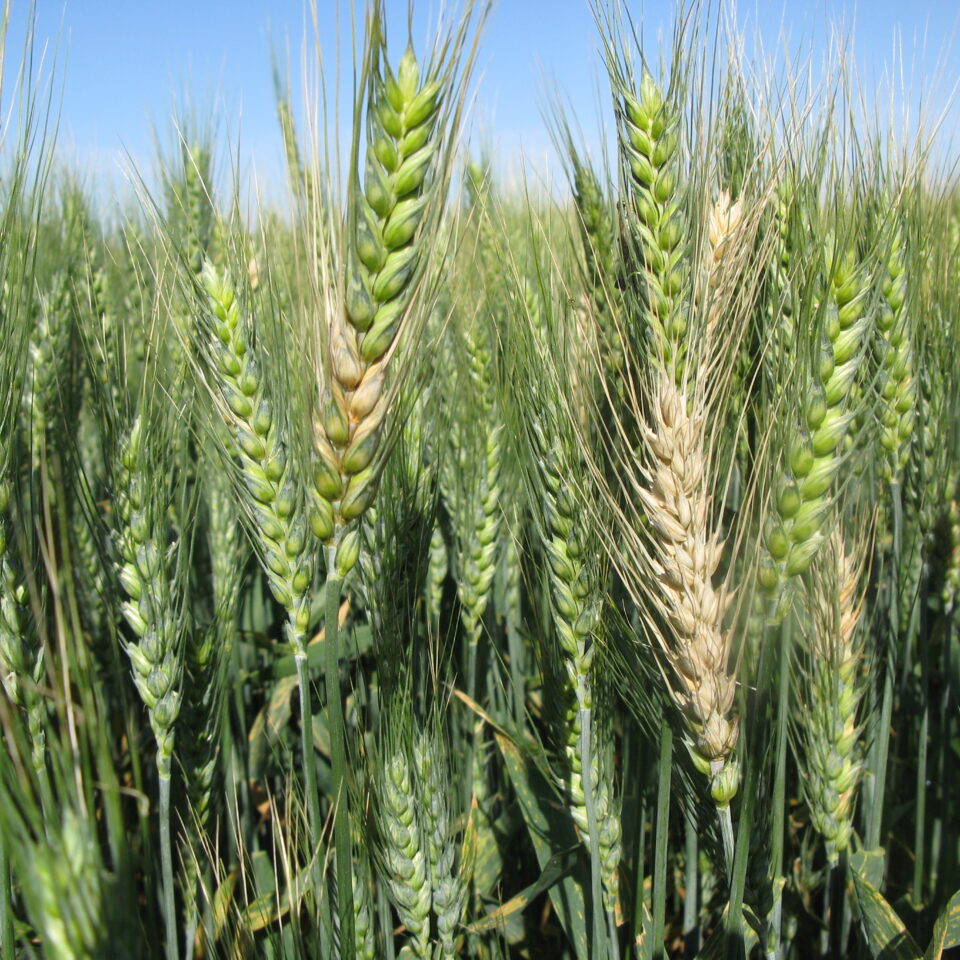
What is it Fusarium Head Blight?
Fusarium Head Blight is a fungal disease that affects the head of small grain crops. Also referred to as Scab, it can affect wheat, barley, oats, rye, corn, and triticale. Wheat and barley are generally the most affected. It is produced by the species Fusarium graminearum, and can cause loss of quality and yield.
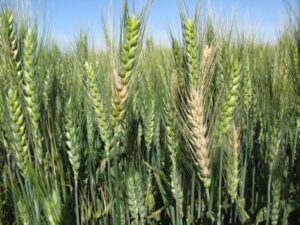
Image: Crop Protection Network
Why is it a Concern?
Kernels of infected grain (also referred to as tombstone kernels) are lightweight and shrunken. These kernels can be lost during combining or seed cleaning and result in a lower overall yield. If the amount of infected kernels are high, grade losses can occur at the elevator.
There is a very low tolerance for infected grain in food and animal feed. This is to protect against harmful toxins produced by the fungus called mycotoxins. DON (deoxynivalenol) is the most common toxin found. It can cause reduced feed intake in livestock, reduce the baking quality of wheat, and the malting and brewing qualities of barley. The disease can also affect the germination rate and seedling vigour if the grain is planted again.
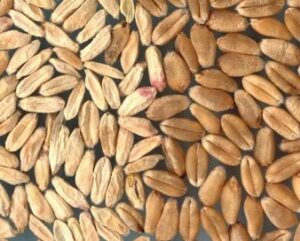
Image: Andersons Canada
Disease Cycle
The fungus overwinters on infected kernels, chaff, and stubble or straw/stalk residue left on the soil surface. Extended periods of warm (22-27ËšC), wet, humid weather substantially favor infection. The infection occurs during flowering. The longer it stays wet during flowering, the greater the chance of infection. If the weather continues, the pathogen can produce spores on the infected grain and become another source of infection.
Appearance
Symptoms appear shortly after flowering. Disease spikelets appear bleached on all or part of the head. During favorable weather, the fungus produces salmon-orange to pink spores at the base of the kernel. These spores will infect adjacent kernels. The infected kernels are shrunken, wrinkled and light in weight. They have a rough scabby appearance and can range in color from light-brown to pink to greyish-white.
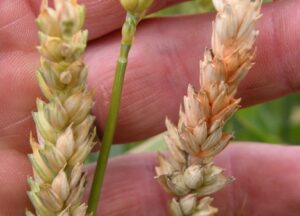
Image: Crop Protection Network
Cultural Control Methods
Quality seed – Plant Certified Seed treated with a fungicide to avoid issues with the pathogen carried on the seed.
Residue management – Limit residues after harvest that can be a source for future years. Chop and spread the straw to encourage faster decomposition. Tillage that buries the straw can be even more effective.
Variety selection – Plant a variety that has higher natural genetic resistance.
Crop rotation – Practice proper crop rotation and avoid following corn and other cereal crops.
Control at the Combine and in the Bin
Harvest early – Prevent the continued growth and spread of the fungus during favourable weather by harvesting as soon as possible.
Increase fan speed – Infected kernels are lighter, increasing the fan speed can help blow them out.
Dry the grain – Dry the grain to proper moisture of 14%. Fungal growth is reduced at proper storage moisture.
Store separate – Separate grain from infected fields if possible. This can help avoid contaminating good quality grain.
Test for DON levels – Testing will help you make a better decision with the end use. Contact your grain merchandiser for more information.
Prevention: Fungicides
Fungicides are most effective when applied preventively. They must be applied prior to infection and are designed to reduce the risk during pollination of the grain head. Many products are available that can work effectively at reducing disease risk and the resulting mycotoxins.
Products registered for suppression of Fusarium Head Blight in wheat:
- Caramba – BASF
- Miravis Ace – Syngenta
- Prosaro XTR – Bayer CropScience
Timing
When spraying preventative fungicides, timing is very important. Spraying too early or too late and it will not be very effective.
The window for application begins when 75% of heads have cleared the ligule of the flag leaf (~Z59) to 50% of the heads beginning flower (Z60). Optimum timing is 1 to 2 days after you reach Z59. Range of application is generally 0 to 5 days after. The intention is to get as many head treated as flowers begin to open.
The speed of head emergence is very dependent on temperatures. The warmer it is the faster you will move through the optimum window. When it is very warm, it might only take a day to go from 75% head out to 50% of heads beginning flower.
Sprayer Set-up
To ensure through coverage of the heads follow these tip when setting up your sprayer:
- Use forward/backward nozzles
- Flat fan nozzles
- Medium to fine droplet size
- Spray 8-10” above the heads
- Angle nozzles 30Ëš
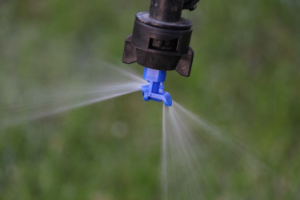
Image: Sprayers 101